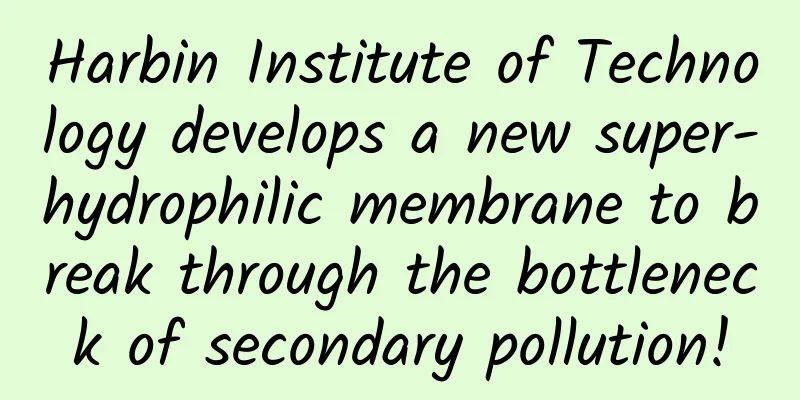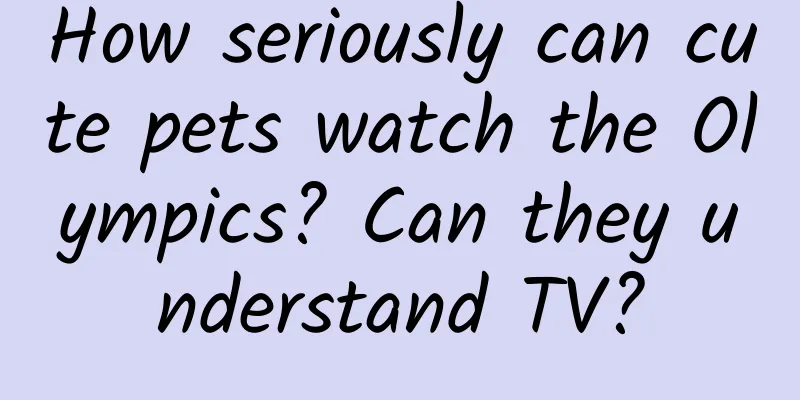Harbin Institute of Technology develops a new super-hydrophilic membrane to break through the bottleneck of secondary pollution!

|
Science and Technology Daily (Reporter Li Liyun, Correspondent Zhang Yuqin) On September 10, the reporter learned from Harbin Institute of Technology that the team of Academician Ma Jun from the Sino-European Membrane Technology Research Institute of the School of Marine Science and Technology at the Weihai Campus of the university has obtained a biodegradable super-hydrophilic nanofiber oil-water separation membrane through electrospinning technology, breaking through the bottleneck of secondary pollution after the traditional polymer separation membrane is discarded . The results were recently published in the journal Science Advances. Industrial oily wastewater discharge poses a major threat to ecosystems and human health, and seriously damages the global water-food-energy chain. At present, oil-water separation mainly relies on super-hydrophilic organic polymer materials to form a hydration layer on the surface of the material to prevent oil from passing through. However, in existing oil-water separation membranes, super-hydrophilic membrane materials are mostly derived from fossil resources, and membrane waste is often disposed of by landfill or incineration. Improper management will produce secondary pollution such as microplastics, which is not conducive to the sustainable development of the ecological environment. In this study, the team used the strategy of electrospinning of biodegradable super-hydrophilic membranes to prepare environmentally friendly super-hydrophilic polylactic acid nanofiber membranes. "This strategy allows polylactic acid and polyethylene oxide hydrogel to form a cross-linked structure. By controlling the electrospinning parameters and designing an asymmetric structure, a high permeability flux, high separation efficiency and biodegradable super-hydrophilic polylactic acid nanofiber membrane is obtained. The separation efficiency of this membrane exceeds 99.6%." Cheng Xiquan, the first author of the paper and a distinguished professor at the School of Marine Science and Technology, Weihai Campus of Harbin Institute of Technology, told reporters that this kind of membrane has stable performance under the conditions of use and can be biodegraded within 1 week after being treated with proteinase K, providing a new way for green and low-carbon development for the preparation of polymer oil-water separation membranes. It is reported that the preparation strategy of this membrane provides a universal hydrophilic modification method for the new generation of high-performance polymer matrix membranes, and at the same time provides forward-looking technical support for the efficient and rapid separation and purification of oily wastewater. |
<<: Tiansheng Bridge, the coolest bridge built by nature
Recommend
Japan successfully tested microwave wireless power transmission: developing space solar power generation
The Japan Aerospace Exploration Agency (JAXA) suc...
People's Daily published an article on new energy vehicle subsidy fraud: The hole must be plugged
Since 2009, the central government has provided s...
Marketing promotion: What else did Luckin Coffee do besides spending money to acquire users?
Today is the day when Luckin Coffee’s first 28% o...
Heartbroken! Fire in Zigong, Sichuan kills 16 people! How to escape from a fire in a crowded place?
On July 18, the Ecological Environment and Emerge...
2022 Douyin Brand Live Streaming Traffic Strategy
This is the "evolution" of Douyin live ...
Android Date Time Picker
[[185911]] Many applications have date pickers, s...
3 elements and ideas for activity review!
It’s the annual 618 event again, and it’s time fo...
Struggling! After dating for a year and a half, I found out that my boyfriend has a family history of cancer. Is it hereditary? Should I break up?
Some time ago, I was bored and browsing posts in ...
Brighter, wider color gamut: What does it mean that the iPhone 7 screen supports DCI-P3?
It has been a week since the release of iPhone7/7 ...
App Store "localization" high-end technology will take you to fly!
In order to better serve different countries and ...
Guochao wallpaper monetization project, novices can earn 200+ per day [materials + software + tutorials]
Guochao wallpaper monetization project, novices c...
Tips for promoting hot-selling clothing products on Google!
In 2018, the annualized value-added rate of cloth...
Is Delta still prevalent in China? Are there any new variants? Official response
Recently, the number of newly infected people in ...
Will iPhone 8's 3D Touch be more sensitive after further upgrade?
To be honest, what Apple fans are most looking for...
New brand IP marketing methodology!
The global economy is recovering and growing in 2...









